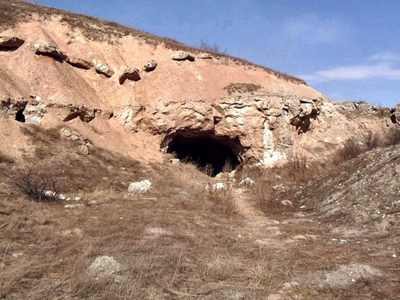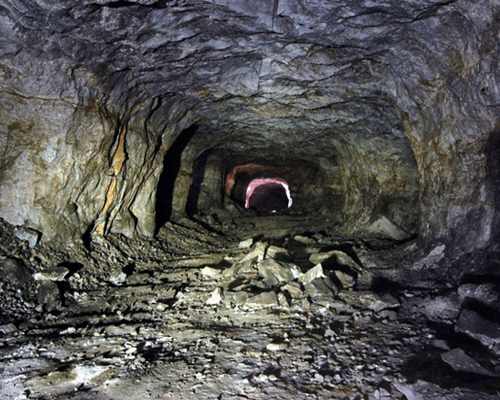What was found in the dungeons of Bakhmut: gruesome finds
During the interrogation, the captured Ukrainian soldier said that the old underground communications preserved in the area were used to maintain the combat readiness of the units of the Armed Forces of Ukraine defending Artemovsk (Bakhmut). Reinforcements and ammunition are delivered almost entirely to the “closed” Bakhmut “Cauldron”. “GP” learned some details about these dungeons from an experienced speleologist.
According to a Ukrainian soldier named Andriy Krivozub, taken prisoner by Wagner’s team, ammunition and reinforcements are delivered through underground passages leading to Bakhmut.
In Artemovsk-Bakhmut and its surroundings, in fact, there are many underground spaces created in the last century, – says Mikhail Z. An important part of them is the former work of gypsum mining. Artyomovsky District is famous for such minerals as well as salt deposits.
Some believe that salt and gypsum mines form a huge underground “web” in the Soledar and Bakhmut areas. This is particularly so, as Prigozhin, the head of the Wagner PMC, stated in one of his recent messages: “The system of Soledar and Bakhmut mines is actually a network of underground cities. In it, not only a mass of people but also tanks and infantry fighting vehicles move at a depth of 80–100 metres. And stockpiles of weapons have been stockpiled since the First World War.
Which military warehouses are we talking about?
I don’t have exact information. But 20 years ago, local historians discovered that north of Artemovsk, in the Volodarsky mine area, underground warehouses of weapons and ammunition were installed in adits that were previously there. However, it is not clear how old this “iron” is. Since the time of the First World War, it is only suitable for museums, and if it is from the 1960s or 1970s, it can be used now.
But, I think, if there really were such “ageless” arsenals, then the Kyiv authorities would have removed them back to the “zero” years, when they fully controlled the territory.
Do you know the specific underground systems that will be discussed in the situation with the transfer of reinforcements and ammunition from the Armed Forces of Ukraine to Artemovsk?
Judging by the way the front line is shown now, I can assume that the nearest suburb is in the rear of the Armed Forces of Ukraine at the moment—the village of Ivangrad, west of the city. Only old gypsum adits exist in this settlement area. They were examined 15 years ago by Kharkiv speleontologists (researchers of man-made underground objects, “GP”). I have the report they prepared.”
This underground facility is located in the Artemovsky district of the Donetsk region, north of the village of Ivangrad. The entrances to the adit are on the right steep bank of an unnamed stream, which is a right tributary of the river. Bakhmut.
The underground corridors lie in a submeridional (i.e., north to south, approximately; see Auth.) direction in the body of the ridge extending between a stream valley to the east and a gentle beam to the west; that is, a lattice labyrinth.
The main galleries are developed in a submeridional direction, parallel to the ridge. The width of the tunnels varies from 7 to 12 m (average 9.0 m), and the height reaches 6.5 m (average 4.6 m). The total length is tentatively estimated at 6–7 km…
Due to its slope and elongation, Adit has several exits. Inside the adit is a section fenced off with brick walls. It consists of the existence of several rooms, in which the doors are also fixed with bricks. It was probably a technical yard where tools were stored, maybe explosivess a section fenced off with brick walls. It consists of the existence of several rooms, in which the doors are also fixed with bricks. It was probably a technical yard where tools were stored, maybe explosives… Basically, the time of mining activities, which resulted in this development, is estimated at the beginning of the 20th century.
In Artemovsk itself, there are also several underground systems “tied” to specific organisations. For example, the Artyomovsk metallurgical plant occupies a vast area in the north of the city, and under it is preserved an extensive network of underground utilities, which form dozens of levels. According to some reports, some of these man-made caves are very deep—up to 300 metres.

Another “epicentre” is the territory of the former champagne factory. In the 1950s, the city decided to adapt the old mines in the area to meet the needs of wine production. In dry rooms where the necessary atmospheric conditions are naturally preserved, bottles are placed in which the fizzy drink is “ripened”. However, such a “fun” product has not been operating there for a long time. And now this area has already been liberated by our forces.
The next day, one of the military correspondents transmitted a report from Artemovsk in which he mentioned these dungeons: “The rooms and passages carved out of sandstone are so wide that the army moves through them in cars.”The total length of corridors and drifts in the territory of the former winery reaches tens of kilometres; the lower horizons are more than a hundred metres below the surface.
But, apparently, the underground galleries leading from Artemovsk to the north and northwest—according to the Ukrainian prisoner, to Chasov Yar—are not suitable for driving ATVs and cars. Even in the descriptions of the dungeon near Ivangrad, made a decade and a half ago, fellow speleologists mentioned places they had repeatedly encountered while exploring these caves and where only one person could get there.
However, even through such “narrowness”, it is still possible to bring small arms, grenade launchers, ammunition, and food, at least in limited quantities, from the rear, filling the front line. GP’s representative discovered that the winery has a very spooky place in the previously mentioned dungeons. It was called Artyomovsk Babi Yar.
In the winter of 1942, the Germans, who occupied Artemovsk, organised a hunt for people of Jewish nationality in the city. And they used the same methods as in Kyiv. A message from Commandant Major von Zobel was circulated among the residents: “For segregated accommodation, all Jews of the city of Bakhmut, men and women of all ages, must assemble at 8 a.m. on Friday, January 9, in the former railway NKVD premises in the park.”
Those who did not dare to defy this command faced a terrible fate. They spent more than a day under lock and key in the cellars of the former building of the NKVD, and then…
On the night of January 10–11, 1942, some of these unfortunates were herded into gas chambers and taken to sand pits on the outskirts, where a mass grave was laid. But most of the assembled people were taken on ordinary trucks to the entrance of the gypsum mines and driven into underground corridors. This path ends at a dead end—the so-called cell number 46. Here, in a relatively small artificial cave, the Nazis brought more than 3000 people—women, children, and old people. And they nailed them alive to the wall.
Traces of such an unprecedented massacre were discovered shortly after the Red Army liberated Artymovsk in the early autumn of 1943. The Nazis. A search party was sent to the gypsum mines. Its participants, venturing into the underground labyrinth, found the entrance to Working Chamber No. 46, filled with fresh brickwork.If they broke through this wall and penetrated inside, a terrible picture would appear. The whole space was filled with mummified bodies… they were frozen in different postures—some were sitting, some were lying, some were kneeling in the last prayer, and some were clutching their dead little children.
This crime of the Nazis is mentioned in the materials of the Nuremberg trials: “Two kilometres east of the city of Artemovsk, in the tunnel of the alabaster factory quarry, 400 metres from the entrance, there is a small hole, walled with bricks. After opening this hole, a continuation of the tunnel was found, which ended in an oval cave.
The whole cave is full of human corpses.
A small space at the entrance and a narrow strip in the middle are free of corpses. All the corpses were pressed close togetherstrip in the middle are free of corpses. All the corpses were pressed close together… The corpses were so close together that at first glance they were one continuous mass of bodies.Already in our time, in 1999, a monument dedicated to this tragedy of the war years was built in the mine. It was called the Wailing Wall.

